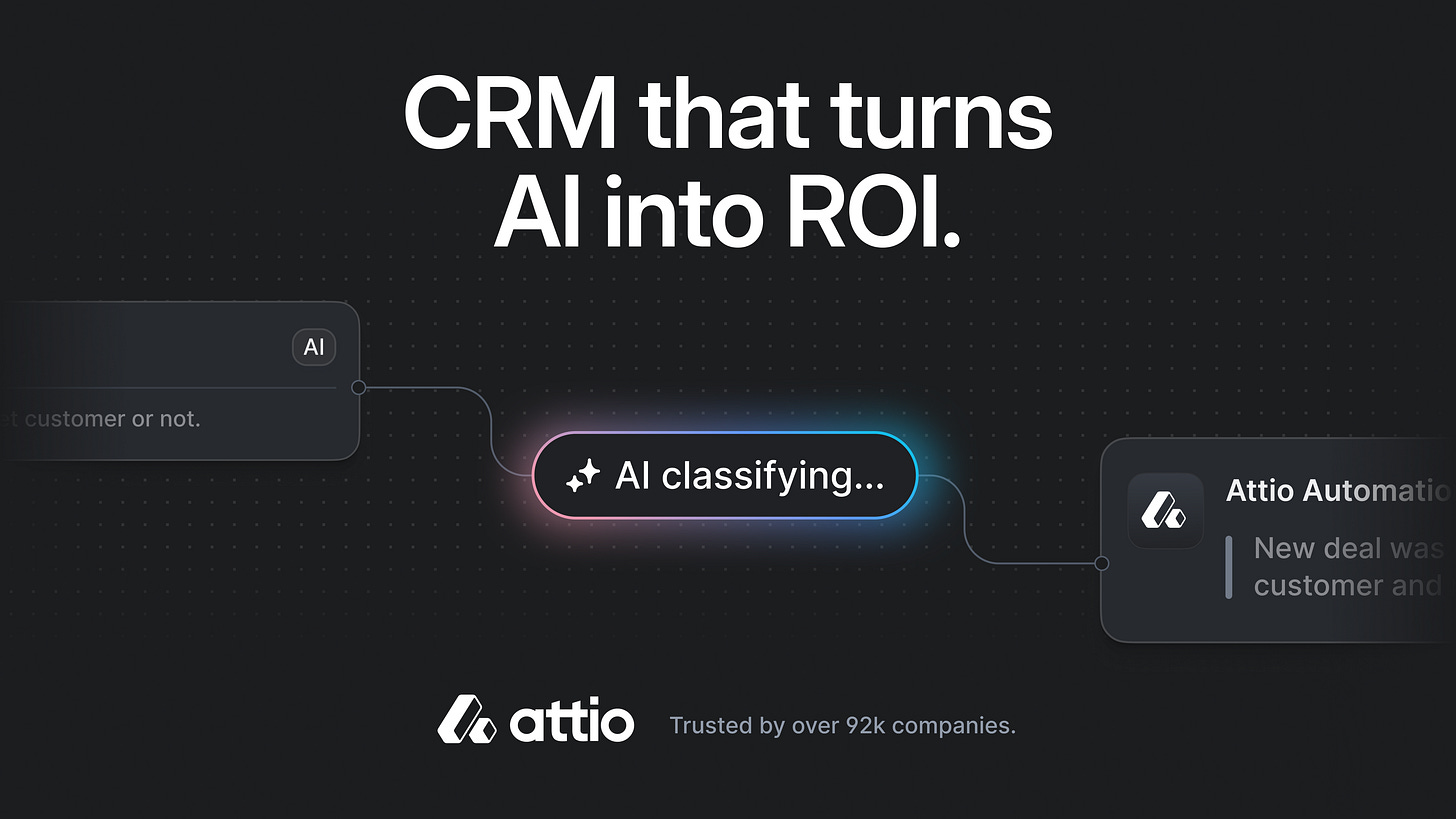Thoughts on the current cycle
The rules have changed—again
👋 Hey, I’m George Chasiotis. Welcome to GrowthWaves, your weekly dose of B2B growth insights—featuring powerful case studies, emerging trends, and unconventional strategies you won’t find anywhere else.
This note is brought to you by Attio.
I launched a new company a month ago.
The CRM we use is Attio.
And I wouldn’t recommend it here if we weren’t customers ourselves.
It’s a modern CRM that doesn’t feel like it was built in 2008.
Clean UX, fast, and powerful where it matters.
Some of the features we rely on:
Enrichment and AI fields that actually save time
Call intelligence to analyze conversations and spot signals
Powerful workflows to automate the boring stuff (e.g., company research)
Sequences you can combine with workflows for outreach, follow-ups, and pipeline building
They also have a solid freemium plan that is perfect for small teams that want to build momentum without the usual CRM friction.
I launched my first agency close to five and a half years ago.
Things have changed dramatically since then.
Same business model, completely different game.
I find it helpful to think in cycles, and this one feels entirely different.
And it’s not just me.
I talk to marketing and growth leaders weekly.
Every one of them echoes the same sentiment.
So, what does that cycle look like? What are some of its characteristics?
Importantly, how can we use what we know (or think we know) to navigate this period?
That’s what I want to unpack in today’s note.
My observations
Some of the characteristics I’m noticing in the cycle we’re in:
Headcount
High headcount isn’t a flex anymore.
Net profit margin and revenue per employee are way more helpful indicators of a company’s size or health.
That wasn’t the case in the previous cycle.
The higher the headcount, the better the impression you’d make in conversations.
(Yes, I fell for that flex, too.)
And that wasn’t just the case for SaaS companies; there was a spillover to marketing and growth agencies, too.
Well, that’s changed.
In this environment, lean, high-performing, fast-moving, and efficient teams are the norm.
How does that affect service providers and people working in-house?
Companies are inclined to outsource more;
Individual contributors (ICs) are expected to do more;
There’s more pressure on growth team leaders for efficiency.
The above isn’t a hard rule.
But I certainly see it happening.
Especially for SaaS companies that have fallen for the promise of “AI efficiency.”
Which, unless you’ve missed the memo, means fewer people doing more things.
This may be true in some instances, but it’s obviously a wet dream in many others.
One important data point here:
“As of 2025, the median revenue per employee for private SaaS companies is $129,724, up from $125,000 the previous year.”
Regardless of the ground truth (for you), we’re all affected by this characteristic in one way or another.
Tech stack
The tech stack is many levels up.



